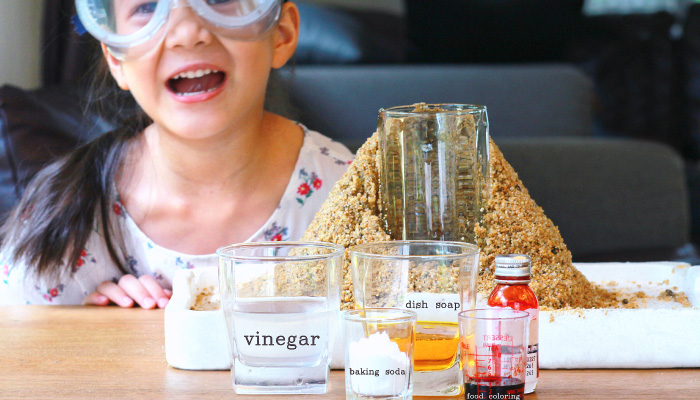Science remains one of the main core subjects in primary school, alongside English and Maths. It can be one of the most exciting and practical subjects, providing joy for both teachers and pupils. Children love the chance to learn through hands-on experiences and discover things for themselves, which is the perfect way to understand the world around them. A positive primary science experience is key to encouraging future generations to not only study science at secondary school but also to follow it as a career potentially.
Understanding the Primary Science Curriculum
The content of science teaching and learning in primary schools in England is set out in the 2014 National Curriculum. Within this framework, certain topics are revisited across year groups with increasing complexity and different focus each time. For example, the study of animals, including humans, is examined every year with a clear progression:
- Year 1: Focuses on the human body, recognizing animal groups, and sorting animals.
- Year 6: Involves understanding the internal structure of the human body, classifying living things based on complex characteristics, and exploring scientific research into classification.
Alongside these topics, the curriculum includes the “Working Scientifically” element, which focuses on developing skills necessary for scientific inquiry. These skills also progress through the years:
- Year 1: Children ask questions, carry out simple tests, record basic data, and try to answer questions.
- Year 6: Students plan and carry out fair tests, use equipment accurately, take precise measurements, draw conclusions, and record results using graphs and charts.
Year-by-Year Science Topics
Here’s a brief overview of what your child will learn in each year group:
Year 1:
- Plants: Basic structure.
- Animals including humans: Parts of the human body, comparing animals.
- Everyday materials: Describing properties.
- Seasonal changes.
Year 2:
- Plants: What plants need to grow.
- Animals including humans: Needs for survival, food, and hygiene.
- Use of everyday materials: Explore and compare materials for uses.
- Living things and their habitats: Variety of habitats, simple food chains.
Year 3:
- Plants: Life cycles.
- Animals including humans: Nutrition, skeleton, and muscles.
- Rocks: Fossils and soils.
- Light: Reflection and shadows.
- Forces and magnets: Magnetic materials, attracting, and repelling.
Year 4:
- Animals including humans: Digestive system, teeth, food chains.
- Living things and habitats: Classification keys.
- States of matter: Changes of state, evaporation, condensation.
- Sound: Vibration, pitch, and volume.
- Electricity: Simple circuits, insulators, conductors.
Year 5:
- Animals including humans: Human development from birth to old age.#
- Living things and their habitats: Life cycles and reproduction in humans and plants.
- Properties and changes of materials: Dissolving, separating materials, reversible and irreversible changes.
- Forces: Gravity, air resistance, water resistance, friction.
- Earth and Space: Earth, Sun, Moon, solar system.
Year 6:
- Animals including humans: Circulatory system, diet and exercise, healthy living.
- Living things and their habitat: Classification, characteristics of plant and animal groups.
- Light: How it travels, how we see, shadows.
- Electricity: Voltage and power in circuits, circuit components, symbols, and diagrams.
- Evolution and inheritance: How living things have changed over time, fossils, dinosaurs, adaptation to environment.
How to Help at Home
Supporting your child’s science education at home can be fun and rewarding. Here are some practical ways to help:
- Be Interested:
Find out their focus topics and take an interest. Look for relevant books, do some research, and have engaging conversations where you both learn together. Here are some book recommendations:
Books for children aged 3+
-
- Zoo-ology by Joelle Jolivet
-
- Look inside your body by Louie Stowell and Kate Leake
-
- Big Book of Science Things to Make and Do by Rebecca Gilpin and Leonie Pratt
-
- The Rabbit Problem by Emily Gravett
Books for children aged 5+
-
- How Things Work by Conrad Mason and Colin King
-
- Ada Twist, Scientist by Andrea Beaty, and David Roberts
-
- Stone Girl, Bone Girl by Laurence Anholt
-
- How the World Began by Christiane Dorion and Beverly Young
-
- This Book Thinks you’re a Scientist by Harriet Russell
Books for children aged 7+
-
- The Official Astronauts Handbook by Louie Stowell and Roger Simo
-
- Self-Destructing Science: Space Activity by Isabel Thomas and Nikalas Catlow
-
- Women in Science by Rachel Ignotofsky
-
- What Makes You You? By Gill Arbuthnott
-
- Operation Ouch! Your Brilliant Body by Dr Chris van Tulleken and Dr Xand van Tulleken
-
- Whizz Pop Bang! (monthly magazine)
Books for children aged 9+
-
- The Misadventures of Charles Darwin by Isabel Thomas and Pete Williamson
-
- MAKE: Making Simple Robots by Kathy Ceceri
-
- Computer Coding Projects for Kids and Coding for Beginners using Python by Carol Voderman and Louie Stowell
-
- The Jamie Drake Equation by Christopher Edge
-
- The Periodic Table Book: A Visual Encyclopaedia of the Elements
-
- The Magic of Reality by Richard Dawkins and David McKean
- Take a Trip:
Visits to science museums, zoos, or aquariums can spark curiosity and engagement with science. These trips don’t have to be directly related to school topics to be beneficial.
Here are some local places:
-
- Museum of Croydon
-
- Croydon Airport Visitor Centre
-
- The Science of Sound
-
- Scientific Society Museum
-
- Mitcham Zoo
-
- Beddington Farmlands
Places in London:
-
- Royal Air Force Museum London
-
- Science Museum
-
- Wellcome Collection
-
- Alexandar Fleming Laboratory Museum
-
- Science Gallary London
-
- UCL Geology Collections
-
- Royal Observatory Greenwich
-
- London Zoo
-
- Sea life London Aquarium
-
- Chessington World of Adventure Zoo
- Make It Personal:
Research famous scientists and unique inventions. Discussing these can inspire your child and show them the real-world impact of science. Here are some examples:
-
- Benjamin Banneker – Scientist and astronomer from the 1700s who wrote a popular almanac.
-
- Alexander Graham Bell – Invented the telephone.
-
- Rachel Carson – Founder of environmental science.
-
- George Washington Carver – Botanist who was called the “farmers best friend.”
-
- Francis Crick and James Watson – Discovered the structure of the DNA molecule.
-
- Marie Curie – Physicist who discovered radioactivity.
-
- Leonardo da Vinci – Inventor and artist from the Renaissance.
-
- Charles Drew – Doctor and scientist who helped create blood banks for World War II.
-
- Thomas Edison – Invented the light bulb, phonograph, and the motion picture.
-
- Albert Einstein – Came up with the Theory of Relativity and the equation E=mc2.
-
- Henry Ford- Invented the Model T Ford, the first mass produced car.
-
- Ben Franklin – Inventor and Founding Father of the United States.
-
- Robert Fulton – Built the first commercially successful steamboat.
-
- Galileo – First used the telescope to view the planets and stars.
-
- Jane Goodall – Studied chimpanzees in the wild for many years.
-
- Johannes Gutenberg – Invented the printing press.
-
- Stephen Hawking – Known for Hawking Radiation and writing A Brief History in Time.
-
- Antoine Lavoisier – Father of modern chemistry.
-
- James Naismith – Invented the sport of basketball.
-
- Isaac Newton – Discovered the theory of gravity and the three laws of motion.
-
- Louis Pasteur- Discovered pasteurization, vaccines, and founded the science of germ theory.
- The Wright Brothers- Invented the first airplane.
- Get Hands-On:
Look up fun, practical science experiments to do at home with everyday objects. Here are a few examples:
Experiments and Activities
- Nature Walks and Observations:
Take regular nature walks and encourage your child to observe different plants, animals, and insects. Discuss their habitats and behaviours. Create a nature journal for drawings and descriptions.
Here are some local nature reserves to go to:
-
- Coombe Wood
-
- Millers Pond
-
- Littleheath Woods
-
- Wandle Park
-
- MHA The Wilderness
-
- Selsdon Wood Nature Reserve
-
- Addiscombe Railway Park
2. Kitchen Chemistry:
Simple kitchen experiments, like making a baking soda and vinegar volcano, can teach about chemical reactions. Making ice cream in a bag illustrates freezing and states of matter.
- Plant Growth Experiments:
Grow plants from seeds and track their growth. Discuss plant life cycles, photosynthesis, and environmental needs.
- Building Circuits:
Use basic electrical kits to build simple circuits. Experiment with switches, lights, and buzzers to learn about electricity.
5. Star Gazing and Space Exploration:
Observe stars and planets on clear nights. Use a telescope or binoculars and discuss constellations, moon phases, and the solar system.
6. Recycling and Environmental Projects:
Create a home recycling centre and discuss the environmental impact of recycling. Involve your child in sorting materials.
7. Bake the Solar System:
Research the solar system and decorate biscuits to represent the Sun and planets. This hands-on activity helps children visualize space and ends with an edible treat.
- Make Colour-Changing Art:
Create colour-changing paint using red cabbage juice and various household liquids. Discuss the science behind the colour changes.
9. Sculpt with Sugar:
Create sugar sculptures and observe crystal formation. Discuss the properties of dissolved solids and crystal shapes.
10. Make a Marble Run:
Build a marble run from recycled materials, discussing gravity, friction, and simple machines.
11. Cornflour Goop:
Mix cornflour and water to create a non-Newtonian fluid. Explore its unique properties through play.
How can Educate Excellence help?
Here at Educate Excellence we provide support for both parents and children throughout primary school. If you need help or support during this time, please contact either Fayas, the head of education, or our PLOs who will be happy to provide advice where they can.
Helping your child with science at home doesn’t require specialized knowledge or expensive equipment. By fostering curiosity, providing resources, and engaging in fun, hands-on activities, you can support your child’s science education and instil a lifelong love for learning. Remember, the goal is to make science enjoyable and accessible, showing your child that science is everywhere and always worth exploring. Engaging with your child in these activities strengthens their understanding of scientific concepts and creates valuable opportunities for bonding and shared discovery.

